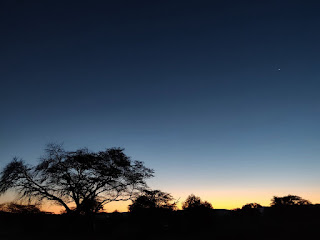It's a chore any pet owner knows too well: picking up the poo. But here it's on a different scale. We drive to the cheetah enclosure and work in pairs, one with a bucket to collect what we find. We're looking for scat and animal bones. The area is large but much of the scat and bones are found nearer the fencing and entrance. We spread out and work in a line carefully looking in bushes and around rocks. We find plenty, especially strewn across the branches of small plants. It's hard and mostly white, from the calcium content. The bones come mostly from what the cheetah are fed but occassionally an unlucky animal might find its way in, never to leave again, except I suppose until we carry out it's remains. We fill three buckets with large bones and scat, all the while under the gaze of the cheetahs that were only a few metres away. All done, we are eager to get back and wash our hands. We hadn't worn any gloves.
























